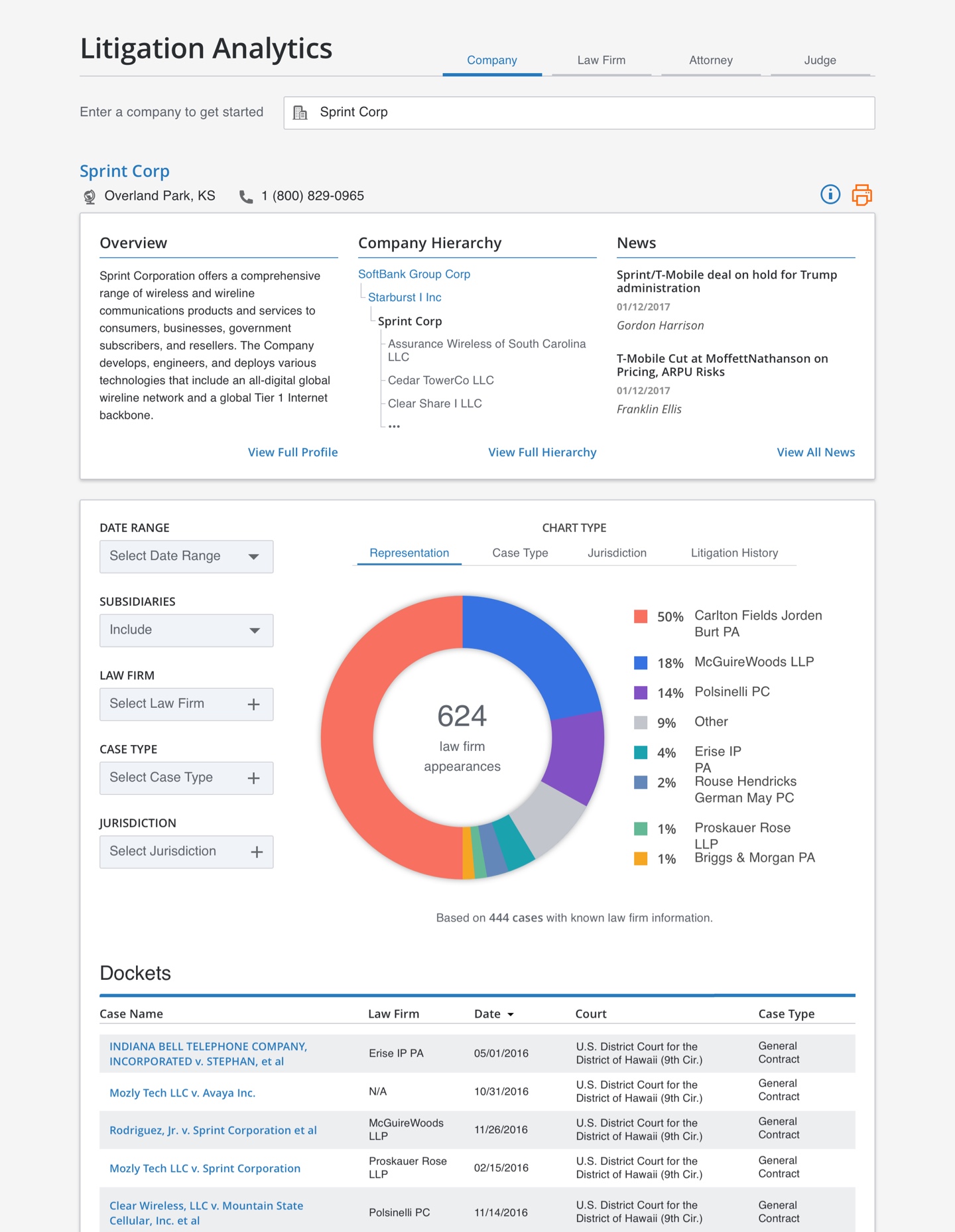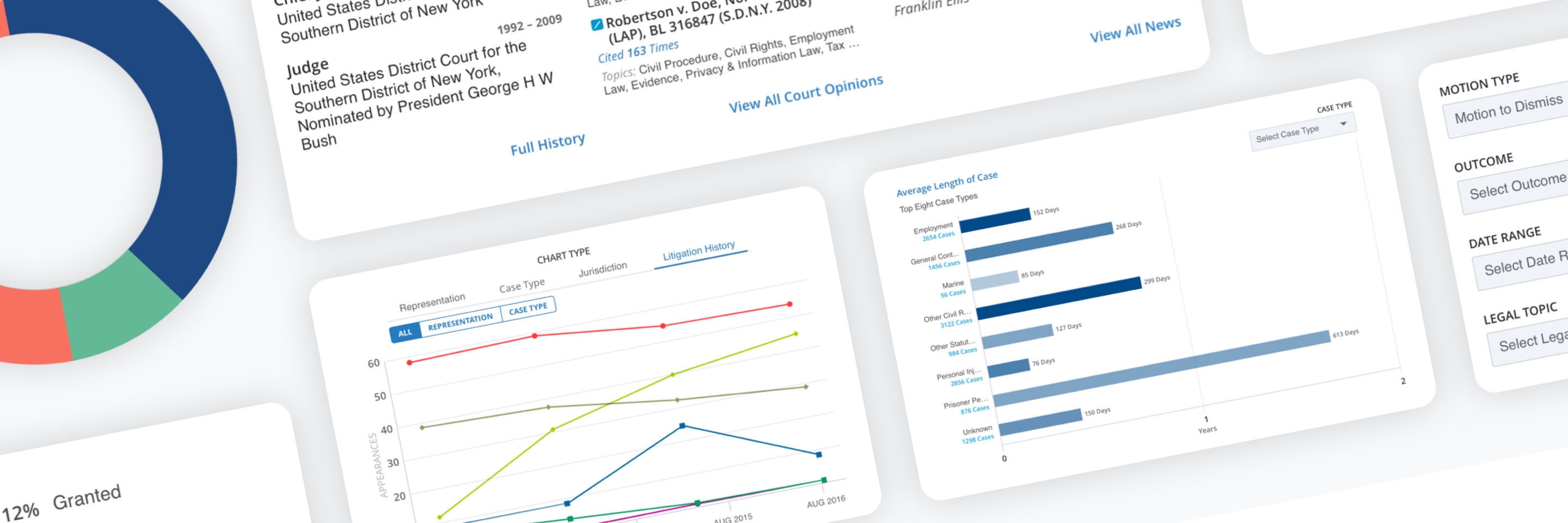
Litigation Analytics
Following a significant data standardization initiative, the product R&D department was presented with a new opportunity to leverage this data to add data visualization and analytics features to Bloomberg Law, our flagship research product.
The first challenge involved finding the intersection of what questions users would find worth asking and what answers the data enabled us to provide. Using Judge-centric data for our MVP, the product's first form was titled Judicial Analytics.
Consulting with attorneys and other legal researchers, we established which graphs and filters would yield valuable analysis and insights for this persona.
As I started ideating on the UI, I realized we would need a modular framework with fairly intense positioning logic.
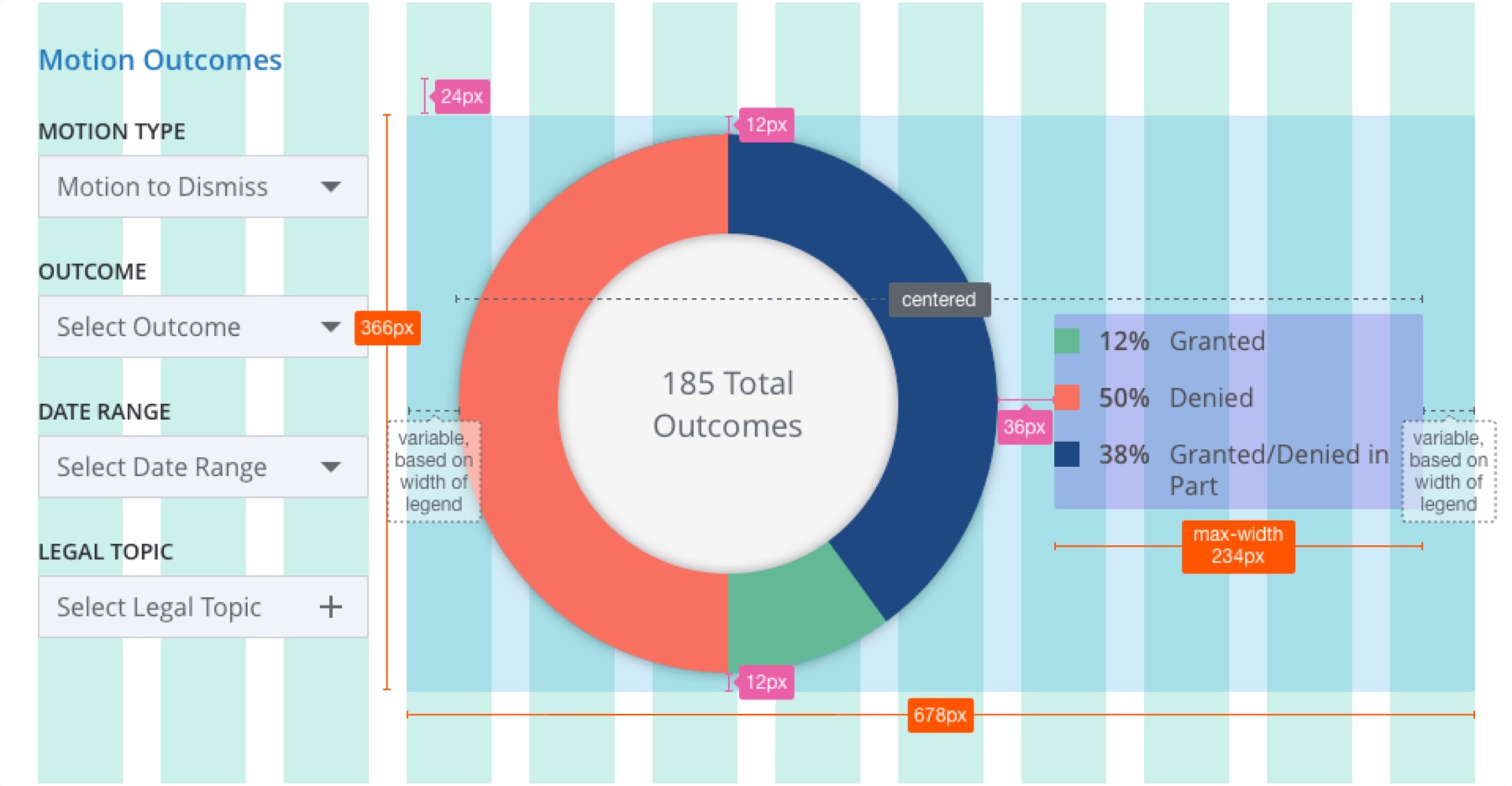
Starting with prototypes in Invision, I user-tested our first round of designs. These tests not only shed light on how users typically expected the filters to operate (eg what kind of Boolean logic would apply), it also revealed the need for additional functionality: the ability to compare across entities and specific filters.
Our following iteration tested two modes of comparison - when specific filters were applied in multiples, users indicated they wanted to see these items side by side instead of combined into a single value.
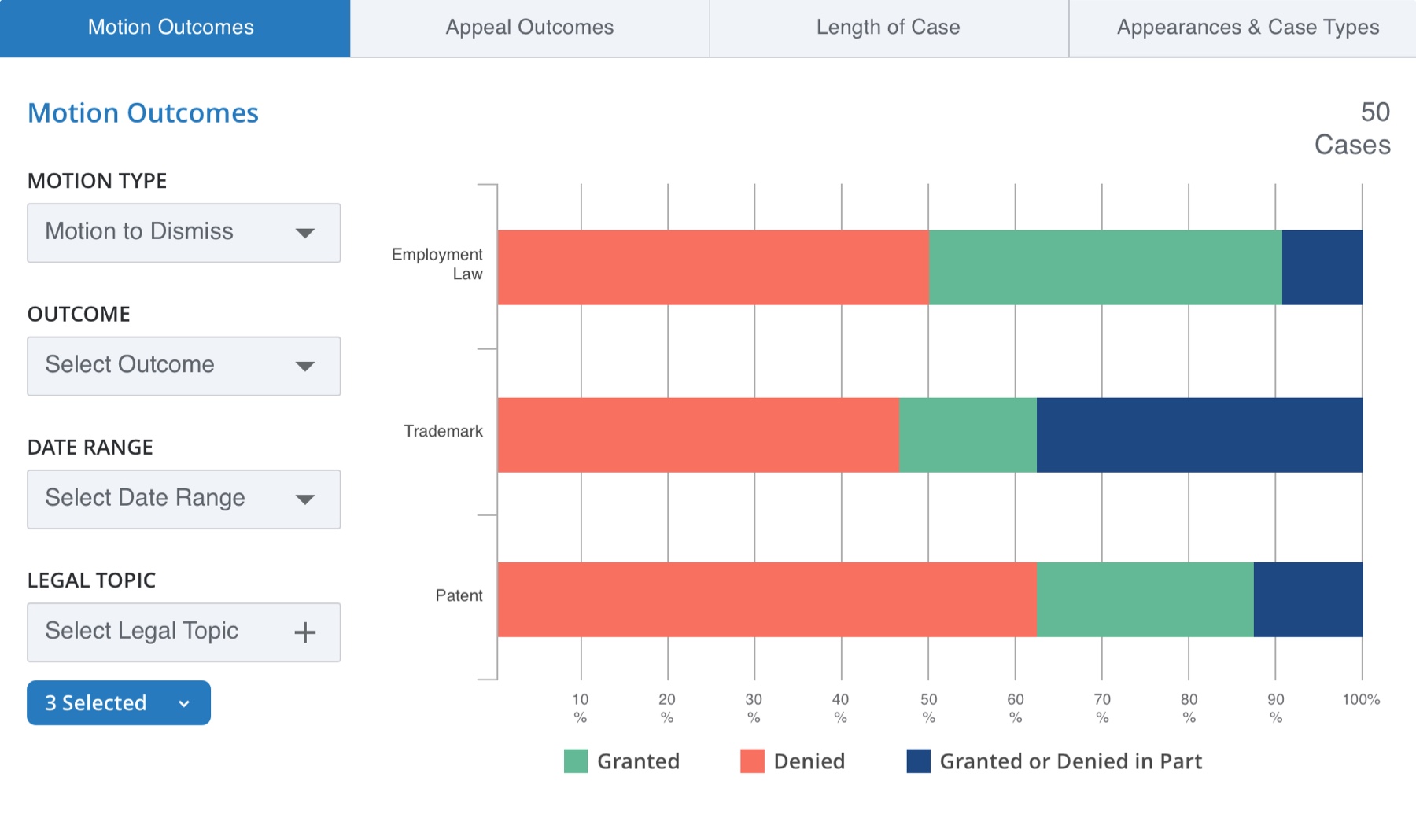
The other mode of comparison involved the main entity - for example a judge - and allowing users to select an additional entity to review along side their current selection.
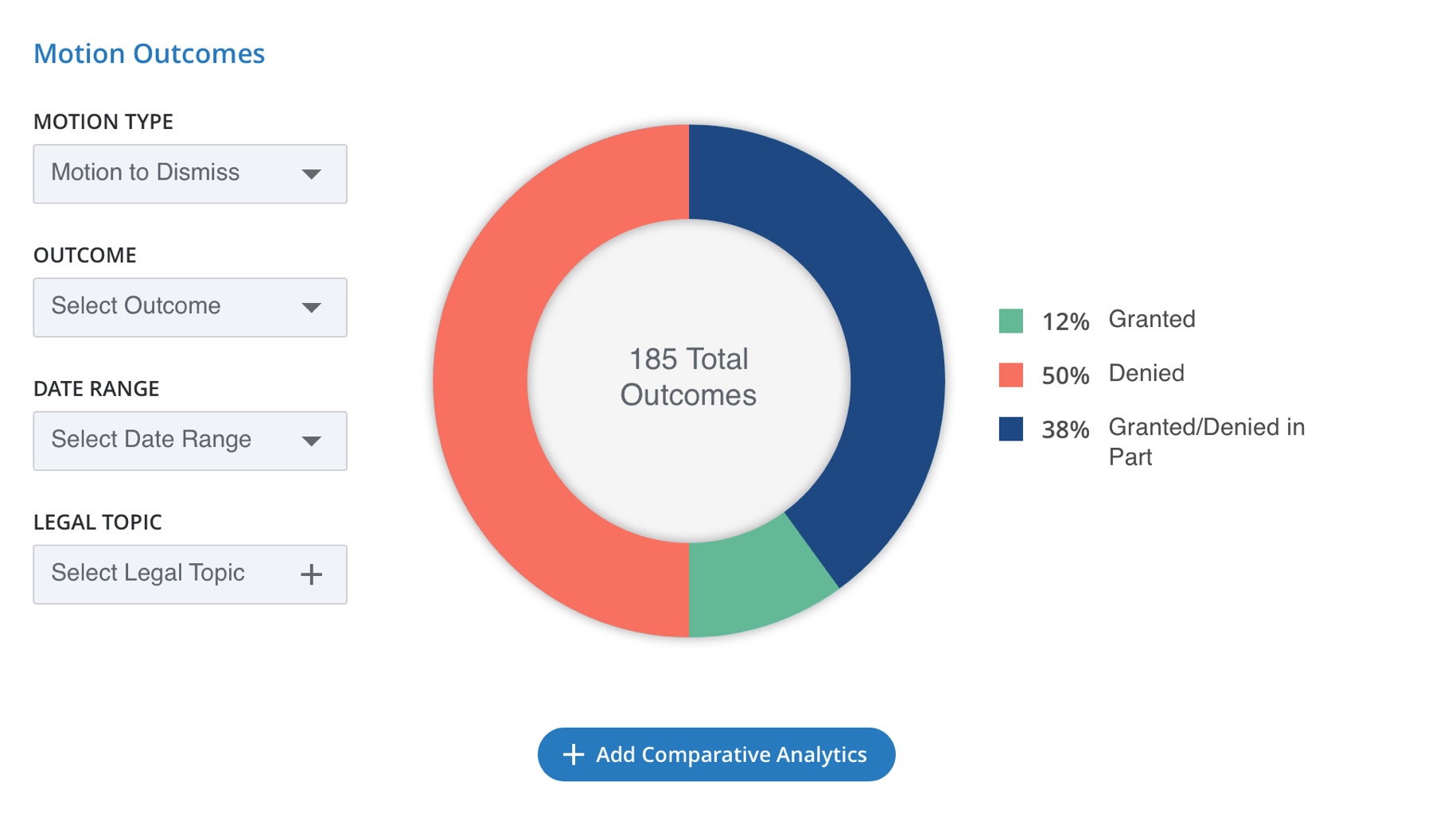
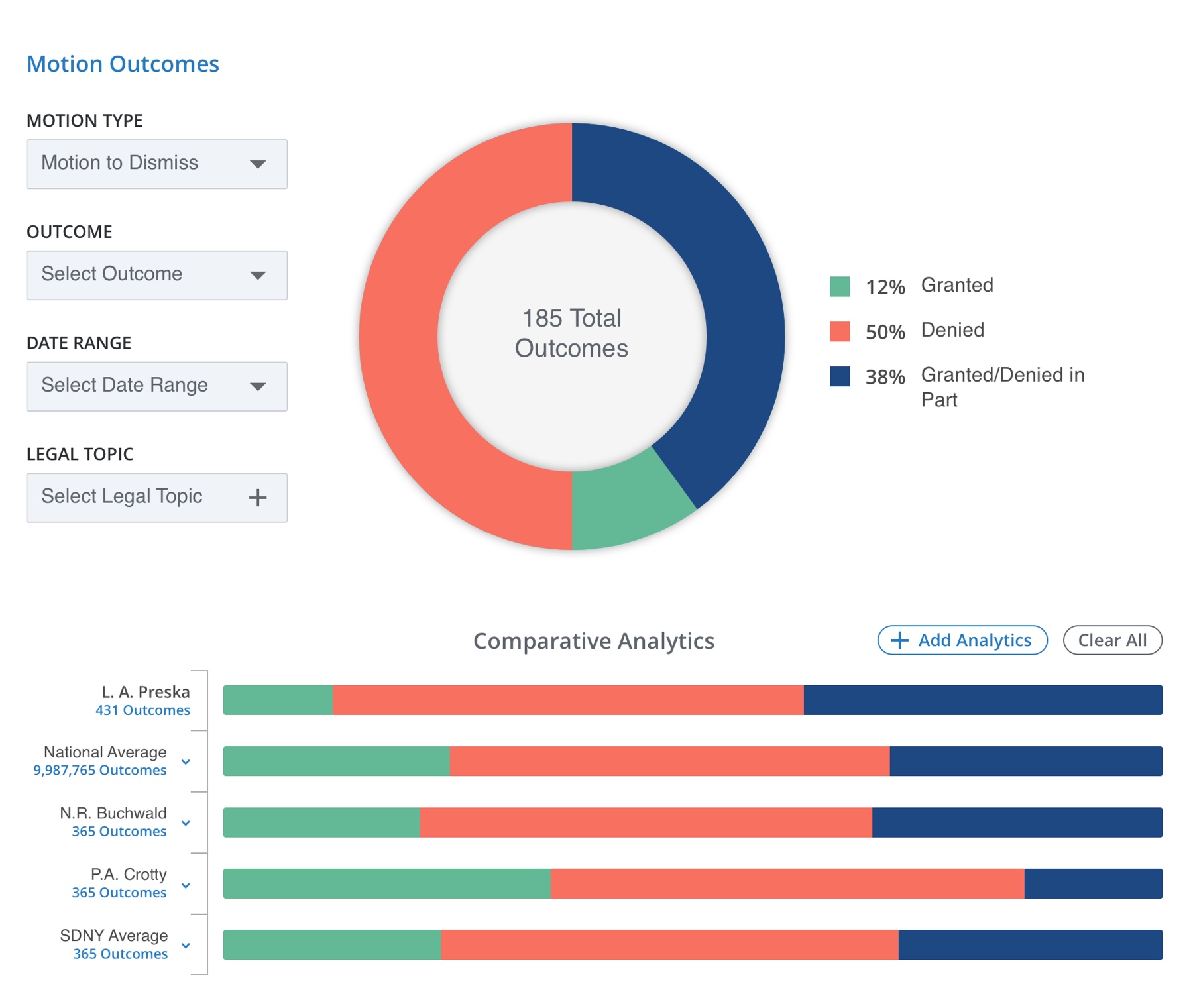
Once we shipped on the MVP I turned my focus to the remaining entity types: companies, law firms, and attorneys - all of which possessed their own nuances and unique modes required to provide valuable insights from the data.
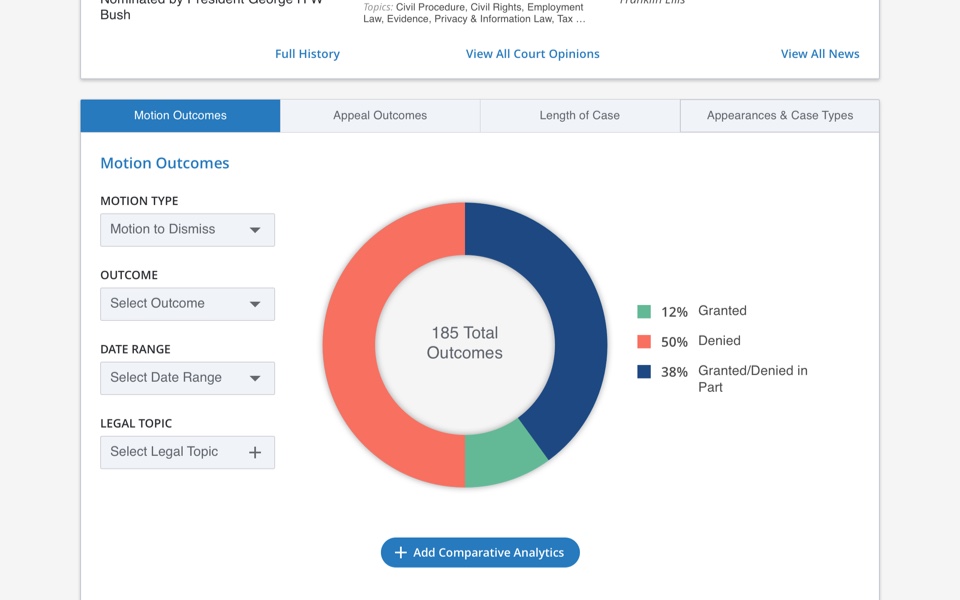
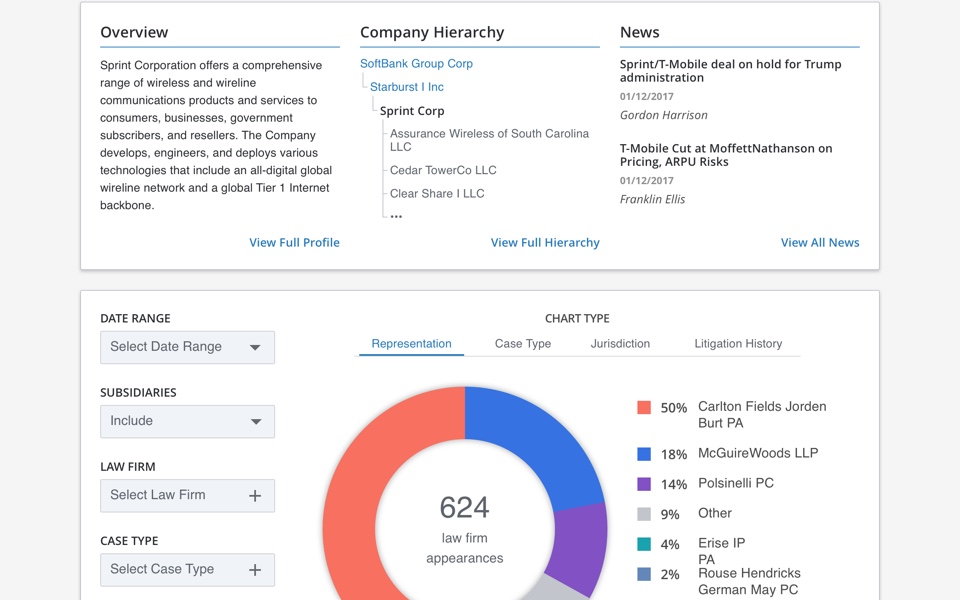
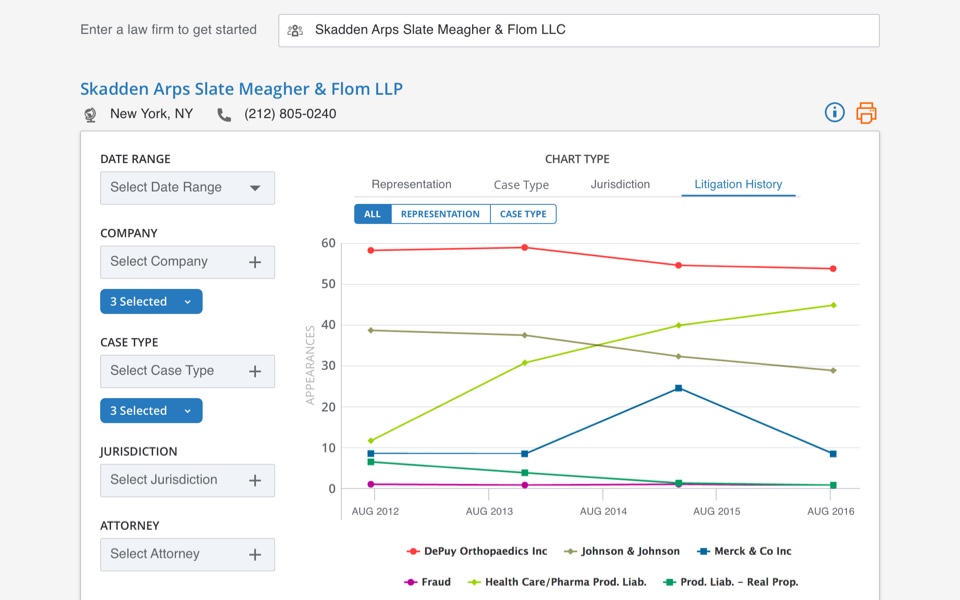
Of course, adding the additional entity types introduced new challenges - with differences in data and user needs, I found that we couldn't apply the Judicial Analytics model wholesale. However, by following hierarchical logic - a defining principle at work throughout the entire project - I could position functionality in the UI such that differences in filter scope did not obstruct user success during testing.

